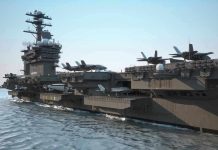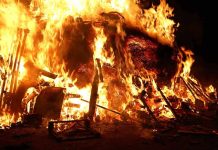
President Trump signs executive order directing military equipment to local police, raising both support for public safety and concerns about increasing police militarization.
Key Takeaways
- Trump signed an order titled “Strengthening and Unleashing America’s Law Enforcement” to increase military and national security equipment for local police within 90 days.
- Attorney General Pam Bondi and Defense Secretary Pete Hegseth, consulting with Homeland Security Secretary Kristi Noem, must implement the plan by July 27.
- Equipment may include armored vehicles, tactical gear, and surveillance technology previously restricted from local law enforcement.
- Supporters view the move as critical for officer safety and crime fighting, while critics warn of potential police militarization.
- This order follows Trump’s border emergency declaration and consideration of the Insurrection Act, showing expanded use of executive power.
New Executive Order Expands Police Access to Military Equipment
President Donald Trump signed an executive order directing an increase in the flow of military and national security equipment to local law enforcement agencies across the United States. The order, officially titled “Strengthening and Unleashing America’s Law Enforcement to Pursue Criminals and Protect Innocent Citizens,” mandates that the Departments of Justice and Defense develop an expanded transfer program for surplus military equipment to police departments nationwide within 90 days, by July 27.
While the executive order doesn’t specify exact equipment types, similar programs in the past have included armored vehicles, tactical equipment, and sophisticated surveillance technology. Attorney General Pam Bondi and Secretary of Defense Pete Hegseth have been tasked with implementing the order, in consultation with Secretary of Homeland Security Kristi Noem. The directive specifically includes developing criteria for which jurisdictions will qualify and what oversight measures will be established.
DONALD TRUMP'S NEW ORDER SPARKS 'MARTIAL LAW' CONCERNS (Newsweek)
The "Strengthening and Unleashing America's Law Enforcement to Pursue Criminals and Protect Innocent Citizens" executive order, which the president signed on Monday, directs Attorney General Pam Bondi and… pic.twitter.com/blS4UgnAjt
— FXHedge (@Fxhedgers) April 30, 2025
Border Security and Expanded Executive Authority
This executive order follows Trump’s declaration of an emergency at the southern border on his first day back in office. That declaration directed officials to evaluate the possible use of the Insurrection Act of 1807, which allows the president to deploy active-duty military for domestic law enforcement under certain conditions. Defense Secretary Hegseth and Homeland Security Secretary Noem are currently assessing the border situation and will provide recommendations regarding military deployment.
The Insurrection Act can be invoked when the president determines it is “impracticable to enforce” U.S. laws through normal judicial proceedings. Historically, it has been used during the Civil War, against the Ku Klux Klan, for school desegregation enforcement, and during the 1992 Los Angeles riots. The Act provides an exception to the Posse Comitatus Act of 1878, which generally limits the use of military personnel in domestic law enforcement.
Support and Concerns
Supporters of the executive order argue that providing police with military-grade equipment enhances officer safety and improves capabilities to combat violent crime and terrorism. Law enforcement organizations have traditionally favored these programs as cost-effective ways to obtain equipment otherwise unavailable within local budgets. The administration has positioned this order as part of its broader strategy to reduce crime and strengthen law enforcement operations nationwide.
Critics, including civil liberties groups and police reform advocates, have raised concerns about the militarization of policing and its potential to erode public trust. Research suggests that militarized police departments can escalate rather than de-escalate encounters with citizens. Some political and public figures have expressed worry about the blurring line between military and law enforcement roles, with references to potential “martial law” appearing in public discourse. Legal challenges to the order may emerge as implementation details are developed.
Sources:
Could Trump invoke another rarely-used law at the border?
Donald Trump’s New Order Sparks ‘Martial Law’ Concerns



